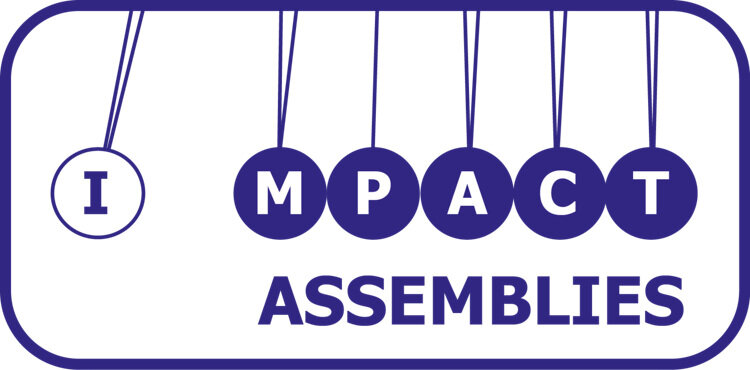Having to capture the attention of about 200 children or young people at any time is a challenge. The fact that most assemblies happen first thing in the morning doesn’t make this job any easier, especially for staff working with teenagers for who mornings can be difficult to embrace .Here are some ideas to help grasp the attention of students of any age. These are the sort of things built in to the majority of the school assembly PowerPoints on the Impact Assemblies website to make them entertaining as well as informative.
1 - Engage the audience as soon as they enter the room. Have something on the screen to make the young people think about something to do with the topic of the assembly. It’s best if it isn’t something that gives away the topic of the assembly to avoid anyone deciding they don’t like it before it’s even started. For example, if the assembly were about resilience then you could have a quote on the screen from a well-known person who has been resilient or has said something about being resilient. If the assembly was about mental health, then you could have a question about a statistic to do with that.
2 - The WIIFM. Before any of us buy in to something we need to know the WIIFM - What’s In It For Me. Without the WIIFM it is hard to see why something is relevant. Why would a young person listen to someone talking about a topic if they cannot see why it’s relevant to their life. After introducing the topic tell them why it is going to help them or how they can help someone else with what they are about to learn.
3 - Involve the audience. Ask them to answer a question with a show of hands or ask a multi choice question with hands up for A/B/C/D. Put a post it note under some students seats to represent a statistic or win a prize. Ask some students to come out and do something linked to the assembly. I saw a great assembly launching the Duke of Edinburgh scheme at a school that involved one of the children walking up and down the stairs at the back of the hall with a fully loaded rucksack as the member of staff talked.
4 - Use less words. People can read faster than someone else can talk. So, if the PowerPoint has sentences or long bullet points in students will get to the end of anything you read faster than you can. The presenter runs the risk of always telling the audience something that they already know. Try to use images to replace words. There are good tips about learning and brains that show how you can do that.
5 - Use images as cues so that you can talk about the topic the slide introduces rather than reading off the slide or a script.
6 - Use video clips. YouTube has millions of short films about lots of relevant topics. Impact Assemblies has a useful one about hard work that uses Will Smith as an example. There are others in the follow up email that comes with the free assembly downloadable from the home page.
7 - Finish the assembly with one memorable thing that creates a feeling that you want the students to remember. As Maya Angelou said, “People will forget what you said, people will forget what you did, but people will never forget how you made them feel”. A short hard-hitting real-life story works well.




